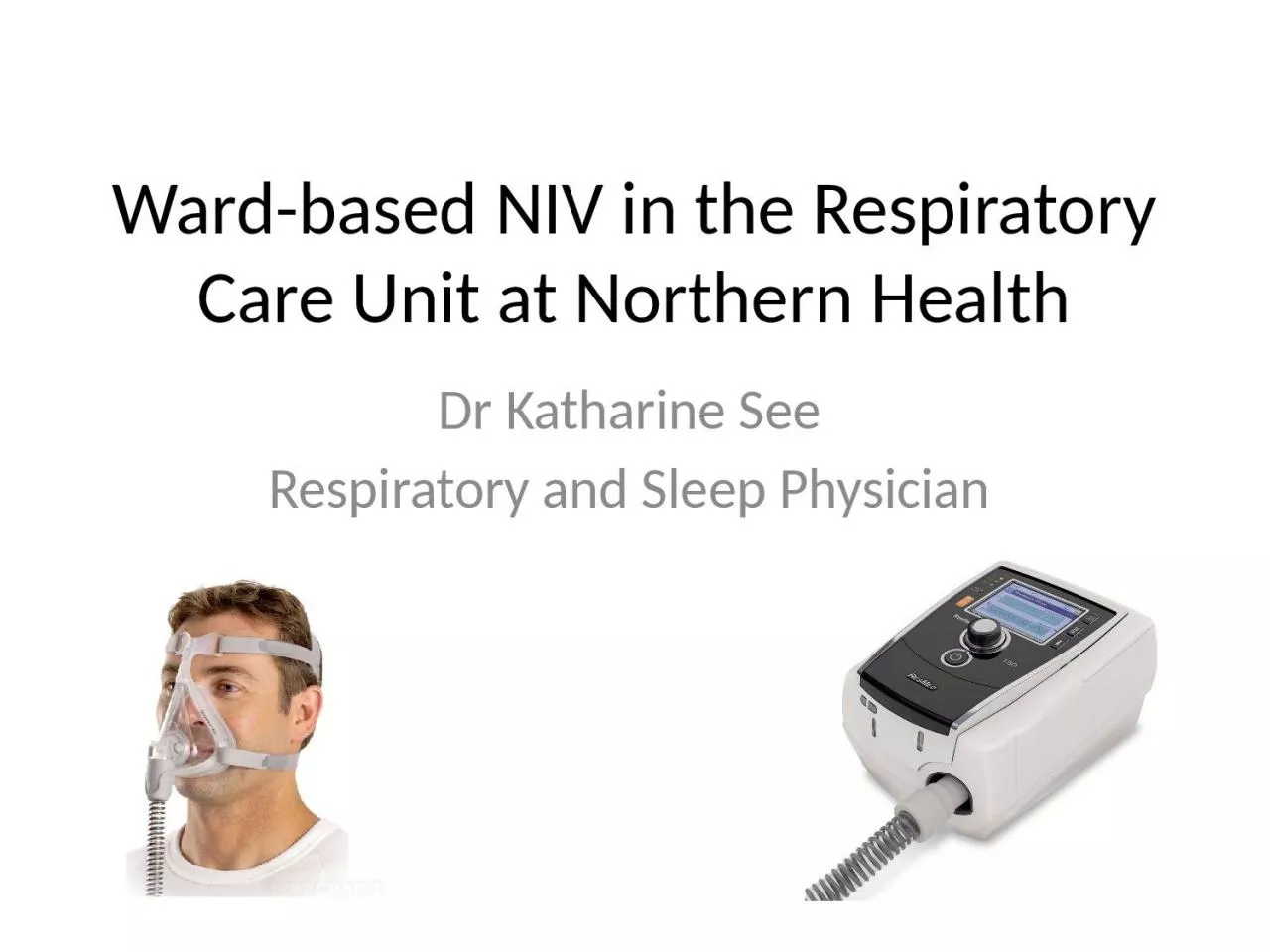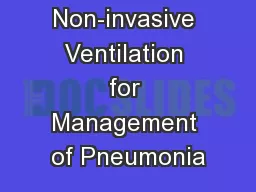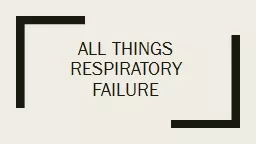PPT-Ward-based NIV in the Respiratory Care Unit at Northern Health
Author : blanko | Published Date : 2024-03-13
Dr Katharine See Respiratory and Sleep Physician Overview RCU at Northern Health Patient selection Evaluation of response Wardbased vs critical care locations Background
Presentation Embed Code
Download Presentation
Download Presentation The PPT/PDF document "Ward-based NIV in the Respiratory Care U..." is the property of its rightful owner. Permission is granted to download and print the materials on this website for personal, non-commercial use only, and to display it on your personal computer provided you do not modify the materials and that you retain all copyright notices contained in the materials. By downloading content from our website, you accept the terms of this agreement.
Ward-based NIV in the Respiratory Care Unit at Northern Health: Transcript
Download Rules Of Document
"Ward-based NIV in the Respiratory Care Unit at Northern Health"The content belongs to its owner. You may download and print it for personal use, without modification, and keep all copyright notices. By downloading, you agree to these terms.
Related Documents














